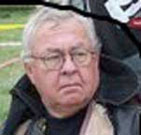 |
Rebuttal to Riding a
Dead Horse
By Bob Rhoades
See Verities & Balderdash, Dead Horses and Live
Husbands
You have obviously overlooked a couple of key points in your assessment
of the dead horse problem which I will take a moment to point out.
1. Buying a stronger whip. Fallacy with this is the amount of
time it will take to write a lesson plan on whip operation as well as
the overtime needed to bring all employees and supervisors up to speed
on whip operation.
2. Changing riders. Once again it’s not that easy. As you
may have guessed there is a definite training problem again and if no
qualified people are accessible, it is hard to estimate the amount of
time it will take to deal with the grievance that will be filed by the
person picked because that person is now working “out of class.”
3. Appointing a committee to study the horse. Not the government
way. This committee would probably already have been convened
because someone thought something was wrong but couldn’t quite put
their finger on it. First thing they’ll need to do is decide when the
second meeting will be.
4. Arranging to visit other countries to see how other cultures ride
dead horses. This should be done first with a minimum of 5
senators and 5 representatives, the director of Agriculture, the
harness racing people and four people from the Ohio Lottery. (they
don’t get to travel much)
5. Lowering the standards so that dead horses can be included. Since
state government is the fountain of youth for mediocrity, lowering the
standards would be quite an accomplishment.
6. Reclassifying the dead horse as living-impaired. This will
work but will require a separate entrance to all state buildings.
7. Hiring outside contractors to ride the dead horse. Actually
this would be selling the dead horse to a contractor, who will in turn,
charge the state for studying the dead horse to see why it doesn’t work
well. This will come with cost over runs, the need for sub-contractors
and two government inspectors.
8. Harnessing several dead horses together to increase speed. This
would be done by the contractor.
9. Providing additional funding and/or training to increase the dead
horse’s performance. See No. 1.
10. Doing a productivity study to see if lighter riders would improve
the dead horse’s performance. Once again the “out of class” problem.
11. Declaring that as the dead horse does not have to be fed, it is
less costly, carries lower overhead and therefore contributes
substantially more to the bottom line of the economy than do some other
horses. This is good only if there is a guarantee that there will
not be any more horse poop.
12. Rewriting the expected performance requirements for all horses. The
state does not have performance standards. If they did, it would mean
writing things down and then making people accountable and that’s not
the state way. And, of course,
13. Promoting the dead horse to a supervisory position. Only one
part of the horse would get promoted and I believe you know which part
that is. No 13 is definitely doable with a little cleanup and
actually there are cases where this has happened so there will be case
studies and it should be able to be on line quicker than any of the
other suggestions.
|

